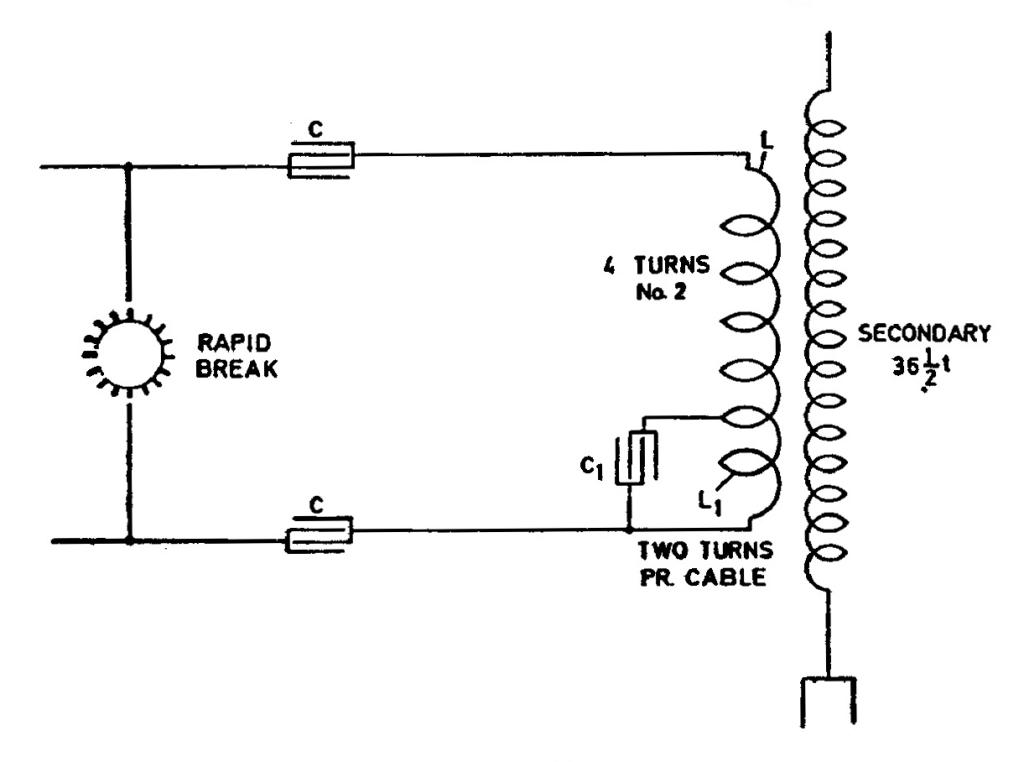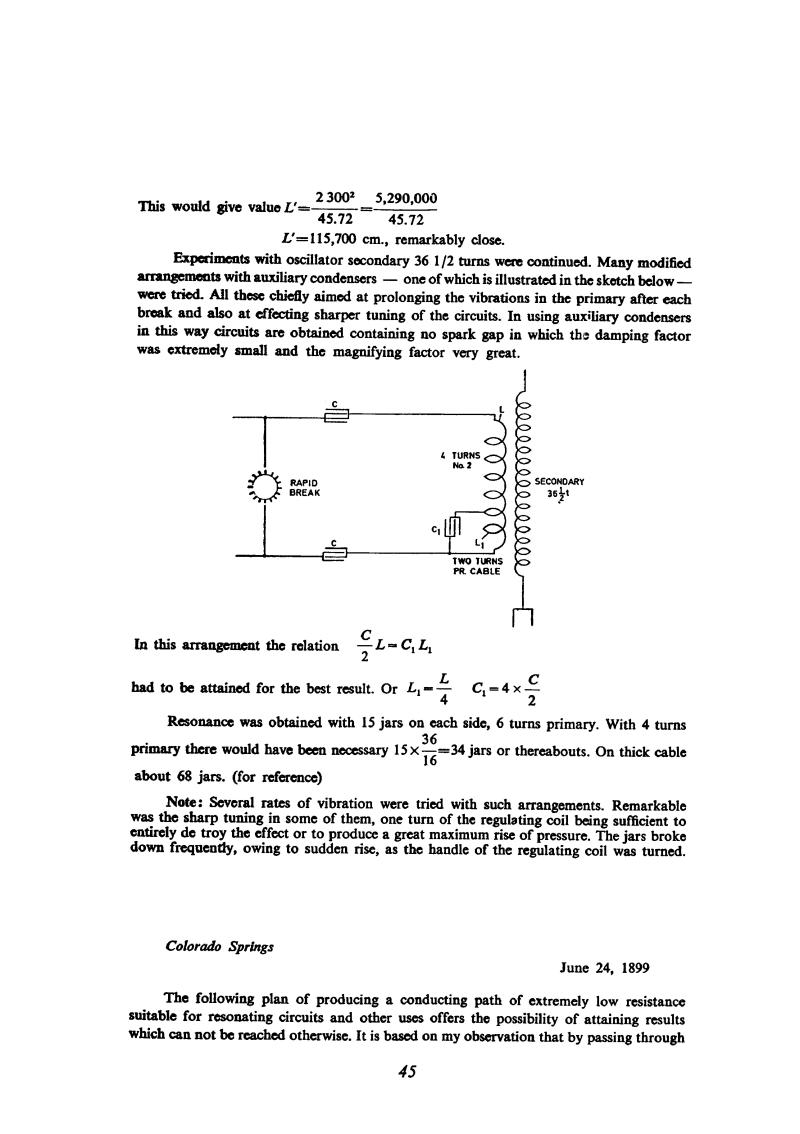
Nikola Tesla Books
This would give value Lâ = $! {{2 \, 300^{2}} \over 45.72} $! = $! {5,290,000 \over 45.72} $!
Lâ = 115,700 cm., remarkably close.
Experiments with oscillator secondary 36 1/2 turns were continued. Many modified arrangements with auxiliary condensers - one of which is illustrated in the sketch below - were tried. All these chiefly aimed at prolonging the vibrations in the primary after each break and also at effecting sharper tuning of the circuits. In using auxiliary condensers in this way circuits are obtained containing no spark gap in which the damping factor was extremely small and the magnifying factor very great.
In this arrangement the relation $! {C \over 2} $! L = C1 L1
had to be attained for the best result. Or L1 = $! {L \over 4} $! C1 = 4 x $! {C \over 2} $!
Resonance was obtained with 15 jars on each side, 6 turns primary. With 4 turns primary there would have been necessary 15 x $! { 36 \over 16 } $! = 34 jars or thereabouts. On thick cable about 68 jars, (for reference)
Note: Several rates of vibration were tried with such arrangements. Remarkable was the sharp tuning in some of them, one turn of the regulating coil being sufficient to entirely de troy the effect or to produce a great maximum rise of pressure. The jars broke down frequently, owing to sudden rise, as the handle of the regulating coil was turned.
Colorado Springs
June 24, 1899
The following plan of producing a conducting path of extremely low resistance suitable for resonating circuits and other uses offers the possibility of attaining results which can not be reached otherwise. It is based on my observation that by passing through
45
June 23
The two formulae are in fact identical if the thickness of the wire is neglected, because then
£2 = (2ÏrN)2 = 4ÏSN2
June 23
For the purpose of primary circuit resonant frequency adjustment he uses the variable inductance*. The value of this inductance he determines by calculation, by means of an equation for an infinitely long coil and another equation which he calls Langevine equation. Actually, these two equations are identical if wire thickness is neglected because then
L2 = (2Ïrn)2 = 4ÏSN2
In continuation of experiments with oscillator from the previous day, he tests a new combination with auxiliary oscillating circuit formed from one portion of the primary inductance. With this connection Tesla expects that the auxiliary circuit influences the arcing oscillator efficiency. The oscillations in the primary last a short period of time, but oscillation is continued in the regime of linked circuits L1C1 and secondary oscillating circuits. Smaller damping in the L1C1 circuit, then in the primary circuit with the spark is more suitable according to energy balance if the spark lasts a long period of time. For short sparks in the primary, however, it is not certain that this is the only reason for better oscillation operation.
Regulating coil is not shown on the schematic. The regulating coil was probably connected in series in the primary circuit with the other elements.
* This inductance could be seen in photograph no. III.
June 24
Rarefied gases had long interested Tesla, and his work on their conducting properties, especially at high frequencies, is well known, e.g. the patents on an electric lighting system and an incandescent lamp(37). He presented detailed analyses of the same problems in his famous lectures(4, 5, 6). Rarefied gas as a conductor is also referred to in his patent application âSystem of transmission of electrical energyâ(13).
June 24
Tesla was for many years, interested in rare gases and his works on current flow (particularly high frequency current) through gases are known. From this field are the patents on electrical lighting system and lamps with red hot electrodes in the vacuum(37). Tesla analyzed the same problems in detail and presented them in his famous lectures about which there was a mention(4,5,6). The rare gas as conductor is mentioned in the patent "Electrical Energy Transmission System"(13) as well. Now Tesla mentions the possibility of the use of gas in a tube instead of metal conductor. Gas is heated to red hot state from an auxiliary source, by which its resistance is reduced below the one the metal would have. So the coil with high quality factor suitable for receiver circuit was obtained. The system obviously is not practical, but Tesla considers that the idea has to be developed on the potential possibility for the purpose of selectivity and sensitivity improvement of weak signals receiver.


